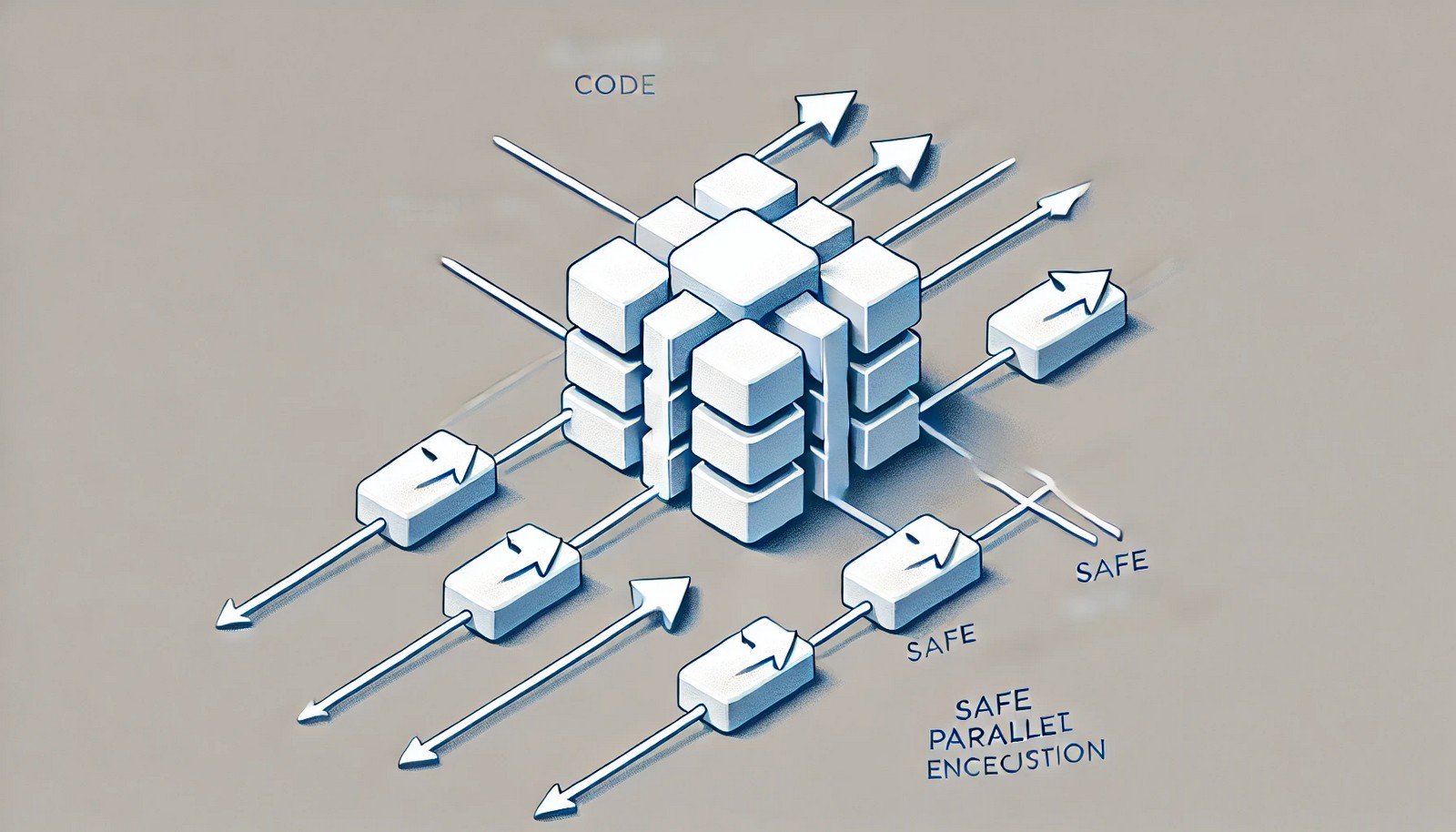Reentrant Code
 (Representational Image | Source: Dall-E)
(Representational Image | Source: Dall-E)
Quick Navigation:
- Reentrant Code Definition
- Reentrant Code Explained Easy
- Reentrant Code Origin
- Reentrant Code Etymology
- Reentrant Code Usage Trends
- Reentrant Code Usage
- Reentrant Code Examples in Context
- Reentrant Code FAQ
- Reentrant Code Related Words
Reentrant Code Definition
Reentrant code is a type of computer program code that can be executed by multiple processes simultaneously without causing conflicts. It is designed to be safely interrupted and resumed, ensuring that different threads or processes can execute the same code without interfering with each other. This is essential in multi-threaded environments and operating systems where functions must be reentrant to avoid race conditions. A key characteristic of reentrant code is that it does not modify shared global variables and uses local variables stored on the stack instead.
Reentrant Code Explained Easy
Imagine you and your friend are reading the same book, but each of you has your own copy. You can both read at your own pace without interfering with each other. Reentrant code works similarly—it allows multiple programs to use the same function at the same time without causing any errors because each program keeps its own "bookmark."
Reentrant Code Origin
The concept of reentrant code emerged alongside the development of multi-user and multitasking operating systems in the 1960s. Early computing systems required efficient use of memory and CPU time, leading developers to create functions that multiple users or processes could safely execute simultaneously.
Reentrant Code Etymology
The term "reentrant" comes from "re-enter," meaning that a function can be safely re-entered while it is still in execution by another process without causing issues.
Reentrant Code Usage Trends
With the rise of multi-core processors and parallel computing, reentrant code has become increasingly important. Modern software development heavily relies on multi-threading and concurrent execution, making reentrant functions critical in real-time operating systems, networking applications, and system libraries. Popular programming languages like C, C++, and Java encourage writing reentrant functions to improve software efficiency and reliability.
Reentrant Code Usage
- Formal/Technical Tagging:
- Multithreading
- Concurrency
- Operating Systems
- Thread Safety - Typical Collocations:
- "Reentrant function"
- "Thread-safe reentrant code"
- "Reentrant execution in multitasking"
- "Ensuring reentrancy in system libraries"
Reentrant Code Examples in Context
- The
malloc()function in C is not reentrant, whereasmalloc_r()is a reentrant version that allows safe concurrent memory allocation. - In operating systems, interrupt service routines (ISRs) must be reentrant to handle multiple interrupts efficiently.
- Reentrant functions in network servers allow multiple clients to be served simultaneously without data corruption.
Reentrant Code FAQ
- What is reentrant code?
Reentrant code is a function or program that can be safely executed by multiple processes or threads simultaneously without causing conflicts. - Why is reentrant code important?
It ensures thread safety in concurrent programming, preventing race conditions and data corruption in multi-threaded environments. - How is reentrant code different from thread-safe code?
Reentrant code guarantees safety when multiple instances run concurrently, while thread-safe code is specifically designed to handle shared data access properly. - What are some common examples of reentrant functions?
Functions likestrtok_r()in C and certain mathematical library functions are designed to be reentrant. - What happens if a function is not reentrant?
Non-reentrant functions may cause data corruption, crashes, or unpredictable behavior when accessed concurrently. - How do you write reentrant code?
Use local variables, avoid modifying global state, and use synchronization mechanisms like mutexes when necessary. - Is all recursive code reentrant?
Not necessarily. Recursive functions must ensure they do not modify shared global variables to be truly reentrant. - Do reentrant functions improve performance?
Yes, they enable safe parallel execution, which improves performance in multi-threaded applications. - How do operating systems handle reentrant code?
Operating systems provide reentrant system libraries and APIs to ensure safe concurrent execution of shared functions. - Is reentrant code always necessary?
No, but it is crucial in multi-threaded and interrupt-driven environments where multiple tasks may execute the same code simultaneously.
Reentrant Code Related Words
- Categories/Topics:
- Computer Science
- Software Development
- Concurrency and Parallelism
- System Programming
Did you know?
Reentrant code plays a vital role in space exploration! NASA uses reentrant functions in spacecraft systems to handle multiple real-time tasks like navigation, communication, and sensor data processing, ensuring mission-critical operations run smoothly even under extreme conditions.
PicDictionary.com is an online dictionary in pictures. If you have questions or suggestions, please reach out to us on WhatsApp or Twitter.Authors | Arjun Vishnu | @ArjunAndVishnu

I am Vishnu. I like AI, Linux, Single Board Computers, and Cloud Computing. I create the web & video content, and I also write for popular websites.
My younger brother, Arjun handles image & video editing. Together, we run a YouTube Channel that's focused on reviewing gadgets and explaining technology.



Comments powered by CComment